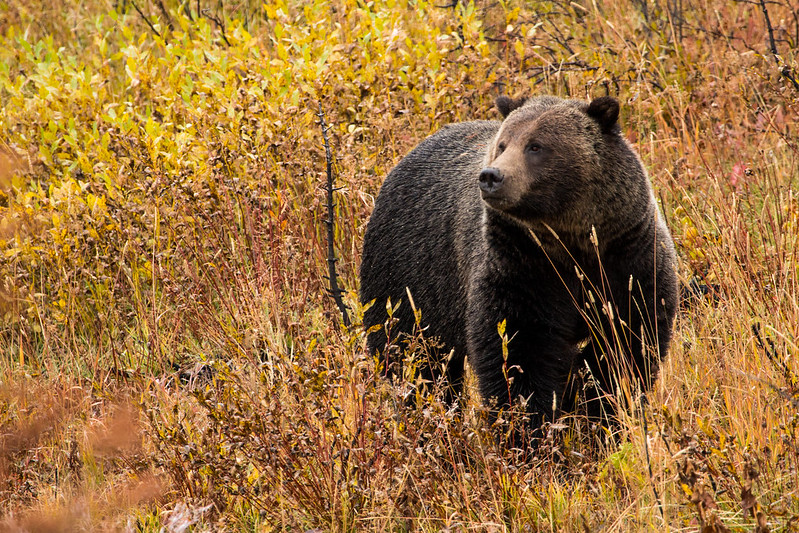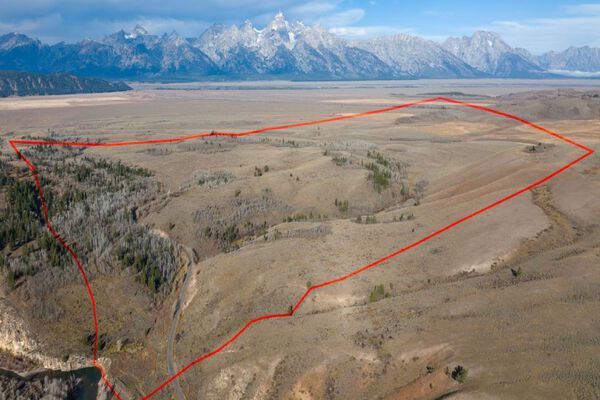
September is a time of change for wildlife in Grand Teton. Many ungulates (hoofed animals) are mating, birds are abandoning territories and embarking on their fall migrations, and all animals are preparing for the winter months ahead.
• By the end of September, elk, moose, and pronghorn are still breeding but won’t be for much longer. Bighorn sheep and mule deer won’t start breeding until November.
• This time of year the forests, meadows, and shrub lands are quieter in the mornings as breeding birds abandon territories and begin migrations to distant wintering areas. Songbirds depart before the harsh weather starts led by instinct. Canada geese are different in that they gather up into larger flocks and gorge on grain (grass seeds) in preparation—waiting for the weather to turn cold, water to freeze, and food to become scarce. They must learn their migration routes from their parents and other adult geese. As heavy-bodied birds that fly fast, over 30 mph, with strong wingbeats, they avoid flying when there is a headwind. Geese take advantage of weather conditions by flying at night when it is calmer or with a tailwind during the day. Geese fly in a V formation to save energy. It is a form of drafting that helps pull the trailing bird forward and provides lift. Parents take turns at the point, shifting as they tire and allowing younger, less strong geese the advantage of flying behind.
• Summer rainfall is a good predictor of available fall forage for elk, bison, and other herbivores and can influence fall migration timing, this year’s lush foliage will likely favor later migrations, but abundant early snow in the high country may push animals toward earlier migrations.
• Black and grizzly bears are now in a phase of their annual life stage known as “hyperphagia,” an intense period of foraging that will help individual animals put on fat needed for the long winters spent in their dens. The high fat content of whitebark pine nuts is an excellent and preferred food source. Whitebark pines are now listed as threatened, but this year’s good seed production will help bears (and red tree squirrels and Clark’s nutcrackers) fatten this fall. By the end of October, most black bears will have entered dens, even if little snow has fallen. Most grizzly bears will wait until November to begin denning. Some adult male grizzly bears and others that have learned to find food late in the fall may not enter dens until December. Bear dens can be found at any elevation and aspect, but higher elevation sites on north aspects are preferred.
• Wolf pups will now be joining their pack members on most foraging adventures, having graduated from rendezvous sites in August or early September, and getting to know their territories in the process.
• Fall spawning native mountain whitefish and non-native lake, brook, and brown trout are heading to natal habitats to commence spawning activities. Water levels will drop as fall progresses into winter. As the water recedes large fish seek winter habitat, cutthroat trout often move downstream to large pools.









